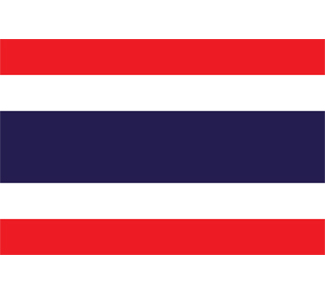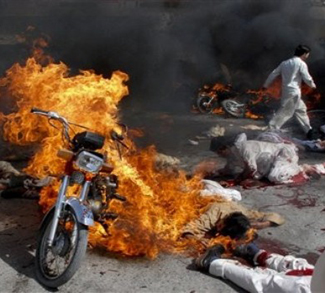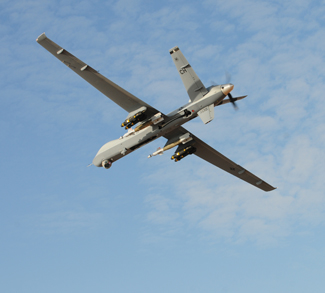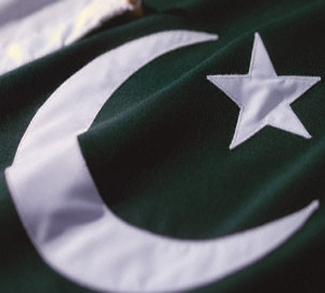If a frequent traveler to Thailand goes around the country today, they couldn’t help but notice a rapid rise in the prominence of Muslims in the country, stretching from Chiang Rai in the north – right down to the south. Many of Thailand’s 6-7 million Muslins are totally integrated into Thai culture and society, a country that takes great pride in its cultural homogeneity. However in the South of Thailand, many, if not most Muslims still live in close knit rural villages and are engaged in traditional activities such as rubber tapping, fishing, and rice farming. A distinct culture, different from the mainstream “Thai” culture has thus been nurtured in the relaxed air of religious freedom in Thailand.
Generally speaking, there is a huge economic contrast between the rural Muslims of southern Thailand and the rest of the community. The incidence of poverty among Muslims in southern Thailand is high. To some in the community however, this is not considered a problem, as a simple religious lifestyle is perceived to offer protection from external “morally corrupting forces.”
As a consequence many rural Muslim parents prefer to send their children to one of the hundreds of Islamic schools around the south of the country. Many of these schools are set up and staffed by members of the community, and they provide an Islamic education on top of the regular national primary and secondary school curriculum.
A few lucky students may get a place in the prestigious and well equipped Pondok Bantan in Nakhon Si Thammarat, founded by the recently-retired Secretary General of ASEAN Dr. Surin Pitsuwan and his family, or one of the local Islamic Council schools, which are also relatively well equipped. Pondok Bantan has been generously funded by a number of Middle East sources, including the Islamic Development Bank, and even the Sasakawa Peace Foundation based in Japan. However the majority of Muslims must opt for one of the community-based local schools.
These local community schools operate with minimal infrastructure and facilities. Classrooms are grossly inadequate, with poor libraries and few other teaching resources available. There is a drastic shortage of teachers for national curriculum subjects, often relying upon volunteers to assist. In the schools or “pondoks” where students reside, students are often forced to sleep up to 10 students per hut, which is barely habitable let alone the potential for fire and disease. As national curriculum studies are of a low standard in Islamic Schools, they attract little government funding in the competitive private school environment of Thailand.
In addition to the abovementioned problems, a number of other pressing issues exist within these schools today. Firstly, the religious curriculum is set by local Ulama or religious scholars. The majority of Ulama themselves came through the “pondok” system and have little, if any trans-disciplinary or holistic educational experience. They tend to see the world the way that they were taught to see the world through their own education. This has led to great emphasis on Fard’ain (compulsory duties a Muslim must perform such as prayer) aspects of Islam, at the expense of Fard Kifayah (duty out in the world). This “narrow” approach to the holism of Islam may hinder student’s ambitions and abilities to integrate within mainstream Thai society.
Secondly, it is very difficult to get any unified approach as Islamic leaders in southern Thailand are fragmented and may even be in competition with each other, rather than cooperative. This leaves the community without any answers or any common approach towards problems.
Due to the diversity of interpretation, there are very few safeguards against the infiltration of distorted and fringe views concerning the meaning of Qu’ranic texts. Although regional Islamic Councils have the responsibility to monitor religious teaching within their regions, there are no requirements for any teachers to conform to any agreed or centralized interpretation. If unchecked, religious schools and ‘pondoks” could become potential breeding grounds of deviant teachings, further isolating students from mainstream Thai society.
For many of southern Thailand’s Muslim youth, the “pondoks’ have become a refuge where students can drift in and out of society as they feel. Very few students ever make it to a university, or acquire the skills to open a business. This tends to reinforce a separate identity with Islamic values rather than students encompassing the aims and values of the wider community.
All this is compounded by the generally poor standard of national curricula education. Students that complete their education within the Islamic school system are at great disadvantage to those who have attended secular schools focusing purely on the national curriculum. This generally hinders rural Islamic communities from participating in the current economic growth and development that’s taking place in southern Thailand, thus widening the income gap and perpetuating relative poverty among southern Thai Muslim communities.
If this gap continues to widen, it may lead to some groups questioning the equity distribution of Thailand, which could potentially lead to some form of resentment, or allow other groups to take advantage of the situation through introducing new dogma into the community. However, as of today there are no links with the fragmented insurgency groups in the troubled provinces of Pattani, Narathiwat, and Yala. This is fundamentally a separate and little acknowledged problem.
Funding, and in particular the lack of grants and donations coming into these schools is causing immense hardships. Islamic schools in southern Thailand are neglected, and this is of particular concern when education is a major contributor to the capacity of any community to improve general wellbeing. With international agencies unaware or ignoring the problem, the gap in assistance has meant that schools are open to any potential benefactors who are willing to assist. One group that has moved into this vacuum is the Pakistan Taliban, which is now funding a number of schools around the southern provinces, where the funds are gratefully accepted.
From a geopolitical perspective there doesn’t appear to be any link between these donations and any militant philosophy on the part of the schools. This issue illustrates the problems that the US “war on terror” should be dealing with around the world, but is failing to recognize, let alone act upon. The war on terror can only be won through assisting in the education and development of Muslim communities around the world and not by drone warfare which is apparently the preferred method of the US administration today. Events in southern Thailand suggest the need for a policy re-evaluation.
There are large numbers of southern Thai Muslims who would prefer a religious based education and this is a basic human right. However it is also important that the best possible well-rounded education is provided if southern Thai Muslim youths are to be empowered to become citizens contributing to the communities they belong to. This is not calling for them to adopt the same growth paradigms other pursue, but rather seeing the need to empower today’s youth to participate in economic, social, and spiritual development in an Islamic way. Development agencies must see this need before the potential problems outlined above fester into realities that will be much more complex to repair in the future.
The Taliban now understand that the battle for “hearts and minds” is an important facet of their international strategy. They have opened up philanthropy as a new front in the “war on terror.”
Is there anybody out there willing and able to compete?
The opinions, beliefs, and viewpoints expressed by the authors are theirs alone and don’t reflect any official position of Geopoliticalmonitor.com.




